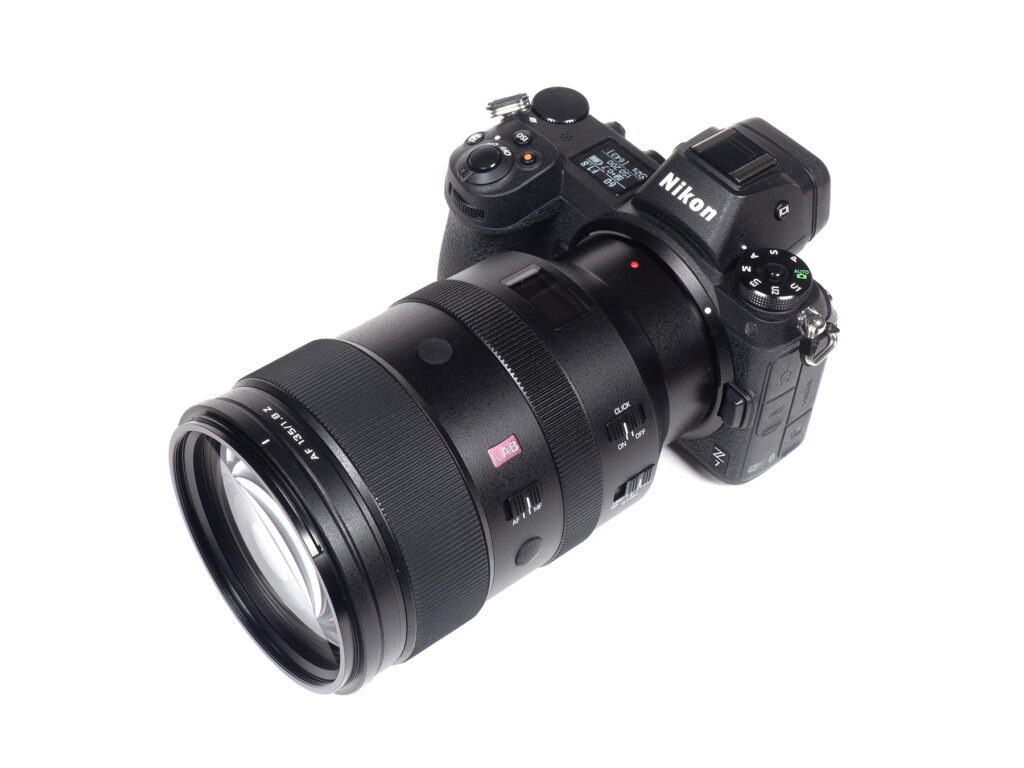Some months back, we tested the Viltrox AF 135mm f/1.8 LAB in Sony E-mount, and we were pretty impressed. Viltrox just released the lens in Z-mount as well. Normally, we don’t repeat testing lenses in different mounts anymore for capacity reasons, but here we made an exception because it’s simply worth it. Of course, most of the findings won’t come as a surprise anymore now. While there are subtle difference due to the different sensors and conversion characteristic, the general trend won’t be all that different.
Just like the Sony version, the Viltrox AF 135mm f/1.8 LAB Z it is priced at $899 USD / 999 EUR. It is the first “LAB” lens – a name extension used for their high-end offerings sitting even above their “PRO” lenses, and their PRO lenses have been pretty good already. Needless to say – such fast 135mm lenses are perfectly aligned to shallow depth-of-field photography and are typically used for still life and portraits. Compared to the popular 85mm f/1.4 gang, 135mm lenses produce images with higher compression of the scene. Some people love it; some don’t – we tend to be in the first camp here.
The Vilrox lens is comparatively heavy in its class, and at 1.3 Kg, it is not for the faint-hearted – that’s 300g more than Nikon’s own Z 135mm f/1.8 S Plena. The build quality is excellent. Based on the weight, you may expect a metal housing, but it’s actually made of high-quality engineered plastics based on a metal mount. Internally, it uses a magnesium-alloy structure. Viltrox states that it is dust- and moisture-proof. The focus ring turns smoothly. Viltrox also implemented a de-clickable, unmarked aperture ring. Unlike in the Sony version, you can use the aperture ring and control the aperture from the camera in parallel (without switching the mode). It feels a little too “detached” with no “guaranteed” change on the next perceived “click”, though.
The aperture, as well as the focus distance, is shown on the color LCD at the read of the lens. A floating focusing system is used for close-focus optimization. The package comes with a deep, barrel-shaped, flocked lens hood.
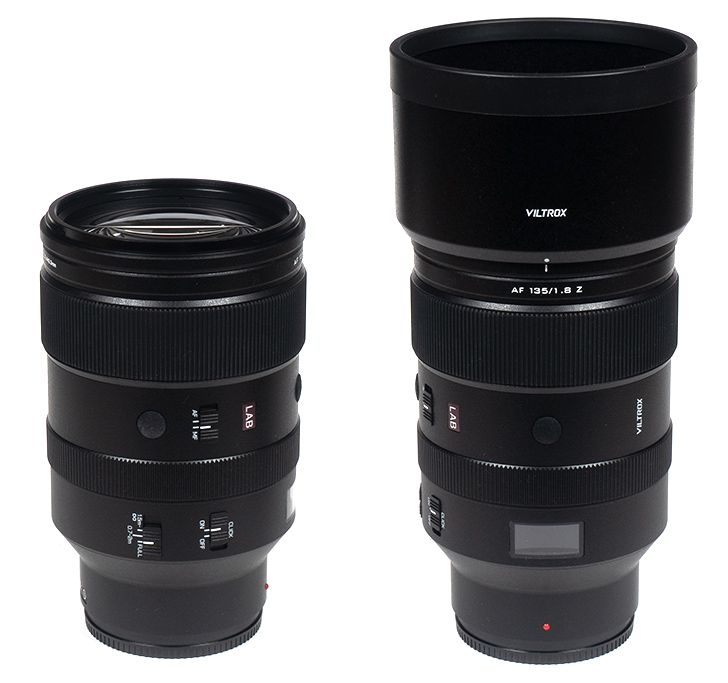
The Viltrox AF 135mm f/1.8 LAB Z uses a “Voice Coil Motor” (“HyperVCM”) for auto-focusing. It is silent and reasonably fast, although we wouldn’t call it “sports fast”. Manual focusing works by wire, as usual. A surprising aspect of the lens is Bluetooth connectivity – it’s the first time we’ve seen this on a lens. When powered by the camera or an attached USB-C cable, you can connect to the lens via the Viltrox lens app – available both for Android and iOS. Bluetooth is also used for firmware updates. EXIF data is fully supported.
| Specifications | |
|---|---|
| Optical construction | 14 elements in 9 groups (4x ED. 2x HR) |
| Number of aperture blades | 11 (rounded) |
| min. focus distance | 0.72m (max magnification 1:4) |
| Dimensions | φ93×145.7mm |
| Weight | 1300g |
| Filter size | φ82mm |
| Hood | barrel-shaped (bayonet mount, supplied) |
| Other features | de-clickable aperture ring, color LCD, Updates via bluetooth w/mobile app support, focus lock, floating system, dust- and moisture-proof, A-B focus point switching, focus limiter, fluorine coating |
Distortions
The Viltrox AF 135mm f/1.8 LAB Z produces a negligible amount of pincushion distortion in RAW images, and the remaining traces are removed via auto-correction if activated.
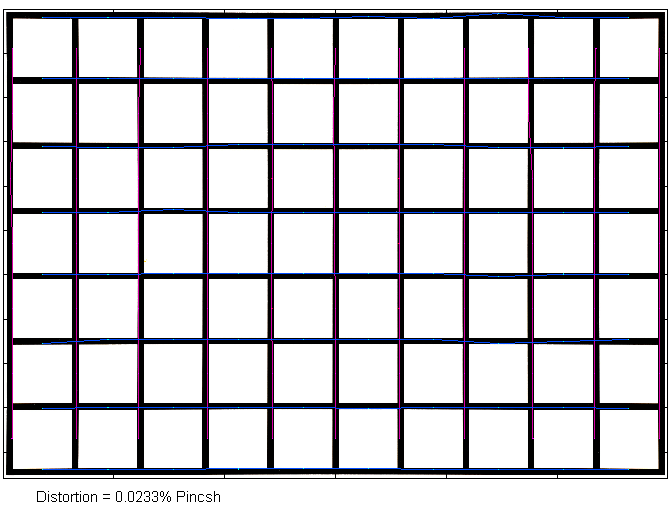
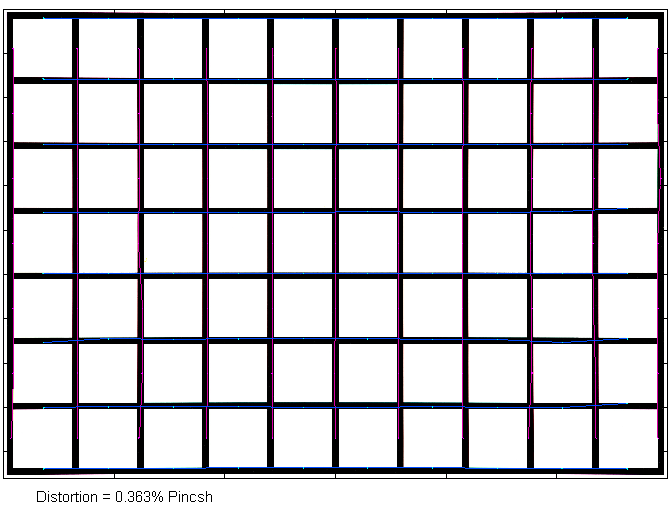
Vignetting
Ultra-large aperture lenses tend to produce very high vignetting at max aperture, but the Viltrox lens produces only a moderate amount of light falloff at f/1.8 – at least for a full-format lens. A RAW vignetting of 1.2 EV (f-stops) is still visible, and the issue is mostly gone from f/2.8.
With auto-correction activated, and that’s the norm these days anyway, the vignetting is barely visible at f/1.8 and irrelevant from f/2.2.
Note: This is slightly less than in Sony mount because Nikon standard JPGs have a different tone curve.
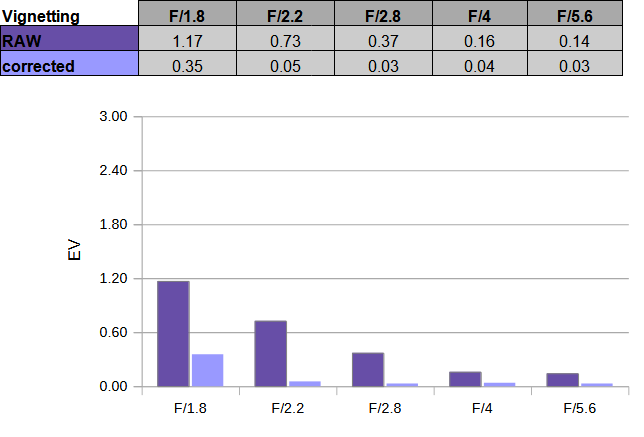
MTF (resolution) at 45 megapixels
The Viltrox AF 135mm f/1.8 LAB produced superb resolution figures in the lab.. The center quality is already stellar at f/1.8, followed by an excellent near-center performance. Even the image corners are still very good here. Stopping down to f/2.2 has only a slight impact. At f/2.8, the near-center quality is now also absolutely flawless. The borders are catching up at f/4, and the corners are now very good to excellent. Diffraction sets in at f/8. f/11 remains easily very good.
The field curvature is negligible. The centering quality of the tested sample was good.
Please note that the MTF results are not directly comparable across the different systems!
Below is a simplified summary of the formal findings. The chart shows line widths per picture height (LW/PH) which can be taken as a measure of sharpness. If you want to know more about the MTF50 figures, you may check out the corresponding Imatest Explanations.
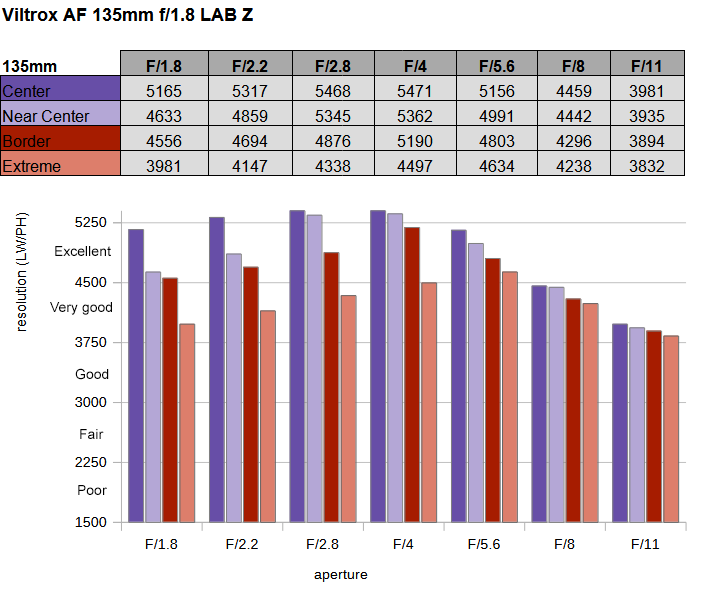
Chromatic Aberrations (CAs)
Lateral CAs have an average width of around 0.3px at the image borders and max aperture. This is already negligible, even without auto-correction.

Bokeh
A 135mm f/1.8 lens is primarily about shallow depth-of-field photography, so let’s have a look at the quality of the bokeh.
Out-of-focus highlights are nicely rendered with a smooth inner zone of the discs and just a hint of an outlining effect. The circular shape of the discs remains intact at f/2.8 – surely thanks to the 11 rounded aperture blades. A slight edginess creeps in at f/4 (not shown).
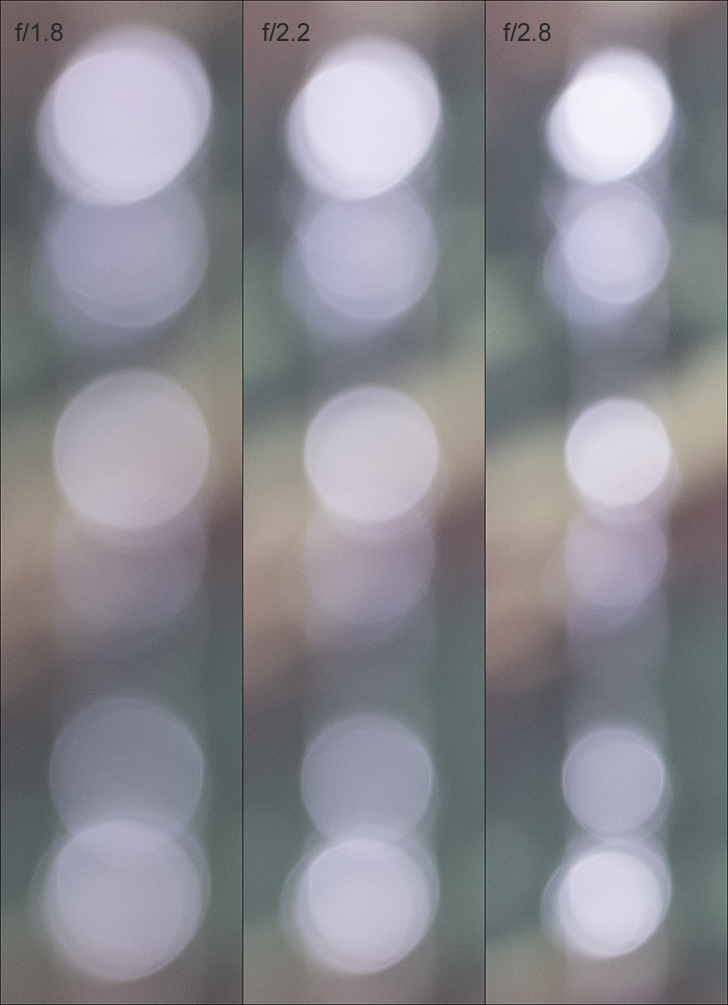
When looking at the highlight rendering across the whole image field, we can spot a slight deterioration from the circular shape from roughly the mid field into the corners. This “cat-eye” effect remains comparatively moderate, though. As usual, stopping down will broaden the zone showing circular discs and the corner discs are fully restored at f/4.
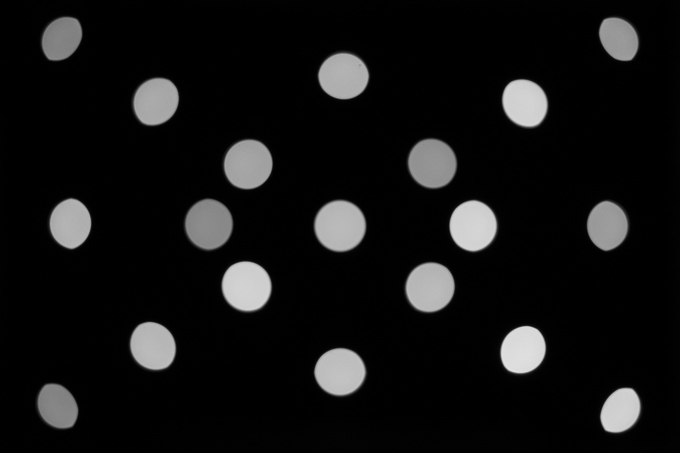
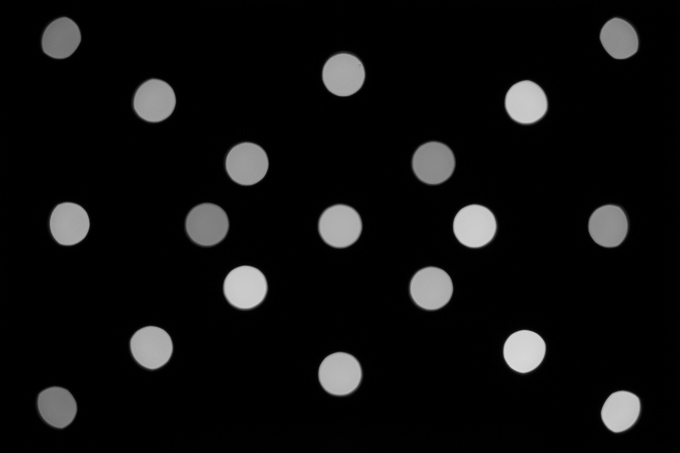
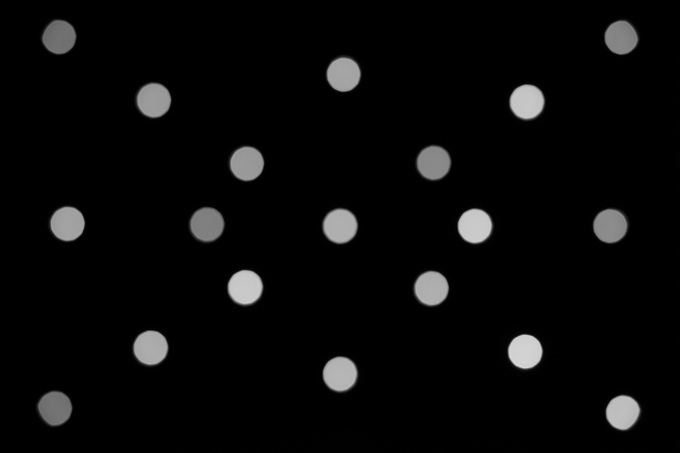
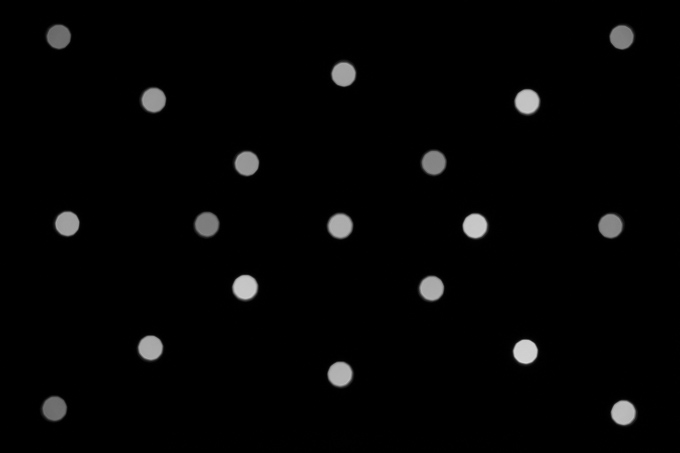
The rendering quality in the focus transition zone is smooth in the image background – shown the left below. The foreground blur (to the right) is good but not perfect (slightly shadowy).
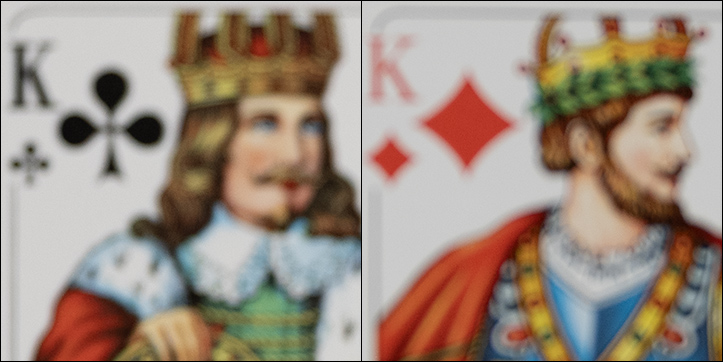
Bokeh Fringing / LoCA
LoCAs, or bokeh fringing, is a color fringing effect on the Z-axis. It shows up with a purplish tint in front of the focus point and a greenish tint behind – and it’s nearly impossible to fully correct in post.
The Viltrox AF 135mm f/1.8 LAB Z does an excellent job here. At f/1.8, there are only traces of color fringing visible, and they are practically gone from f/2.8.
You may also notice that the focus point remains spot on when stopping down (= no relevant RSAs).
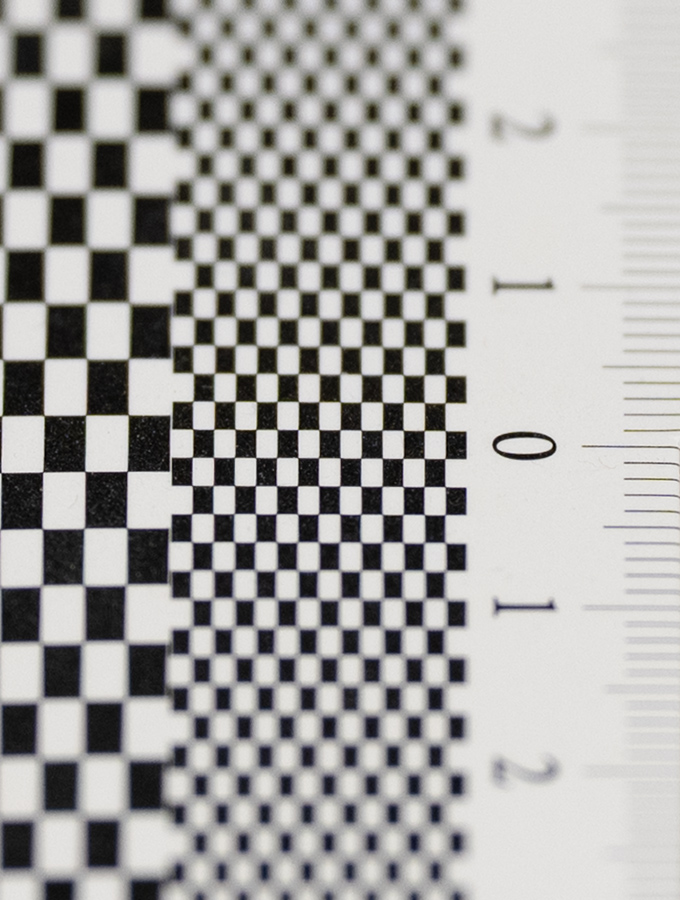
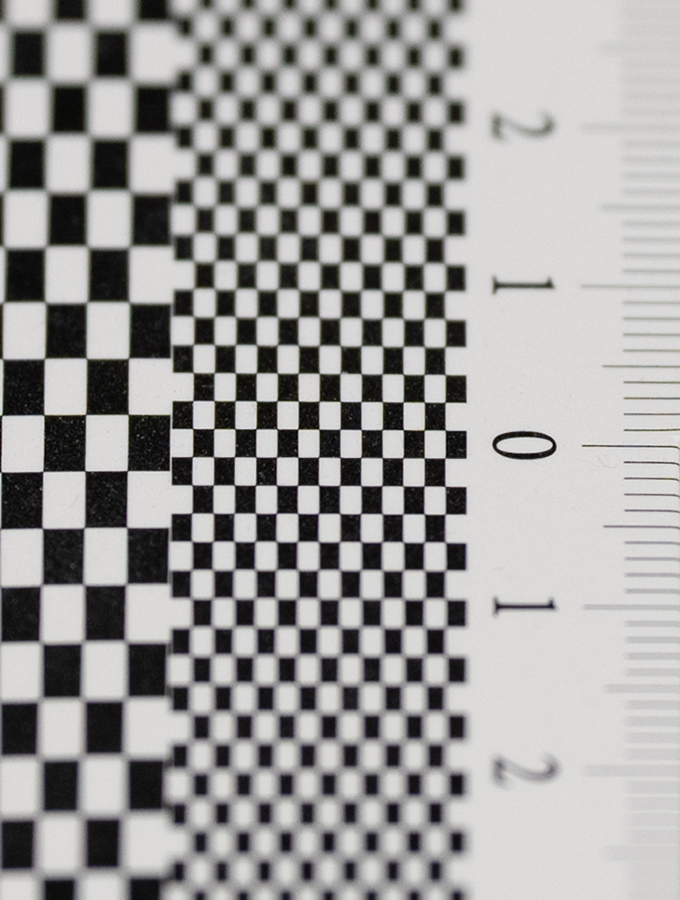
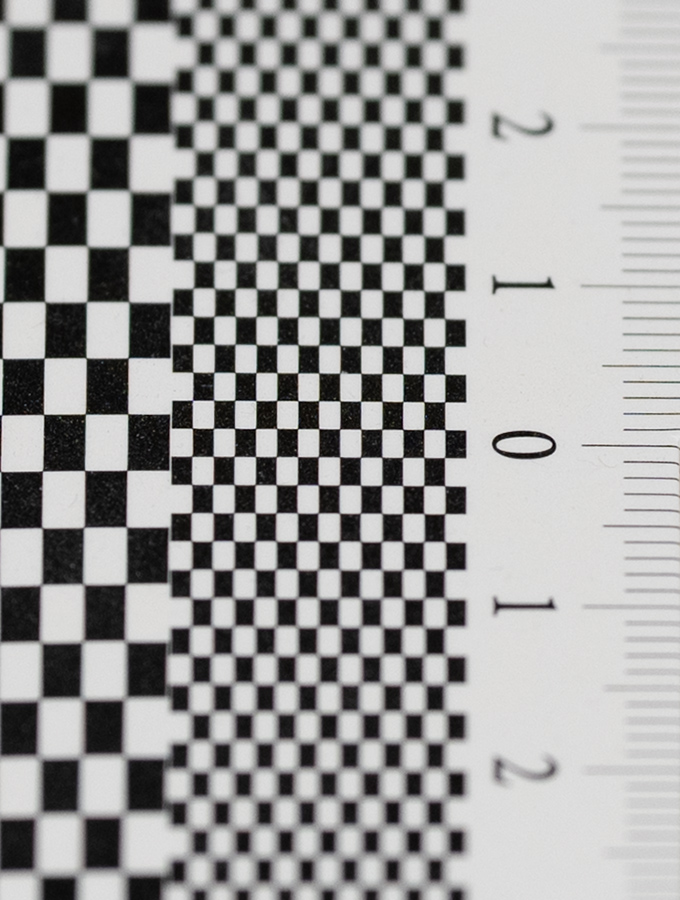
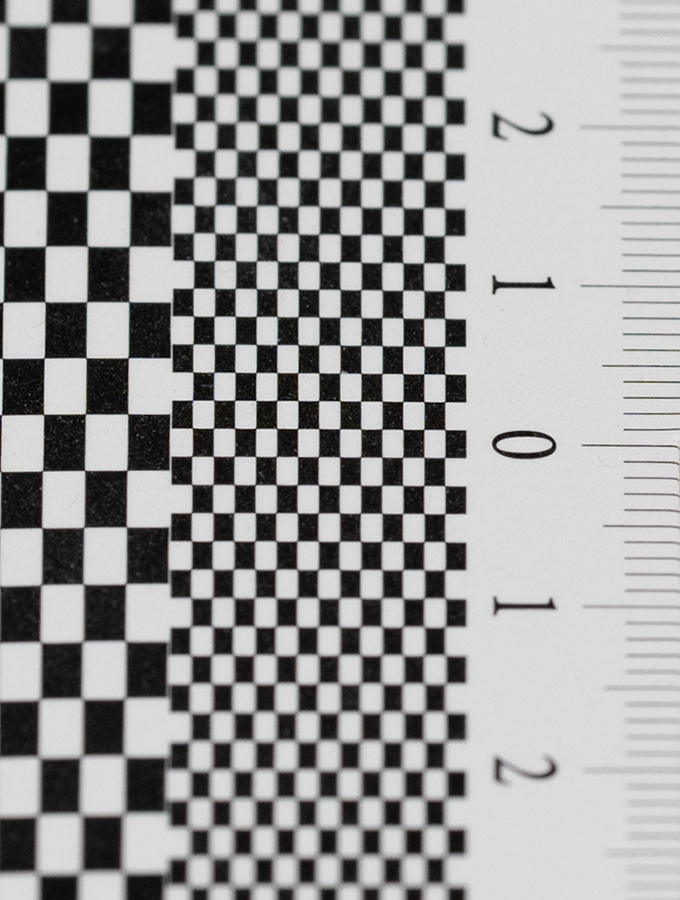
Competition
The Viltrox AF 135mm f/1.8 LAB Z faces the competition from the Nikkor Z 135mm f/1.8 S Plena. The Nikkor lens sells for $2500 or in other words – for a factor of 2.5x more. While you may be able to digest such a price tag if you are a professional who can deduct the costs via your tax return, the price difference is probably going to be a bigger entry hurdle for normal mortals. The Nikkor may have advantages in terms of AF speed and, surely, professional services support but optically, there can’t be much of a difference really. But yes, we have yet to test the Plena lens so that’s speculative if you like.
Sample Images
Note: The best weather conditions weren’t ideal during this session.
The test in Nikon Z mount didn't reveal anything fundamentally new compared to what we have seen in Sony E-mount already, but this was to be expected, of course. The Viltrox AF 135mm f/1.8 LAB Z remains an outstanding lens at a comparatively affordable price point. It is exceeding sharp in the image center straight from f/1.8 and the quality in the outer image field is more than just impressive. And it only gets better from there. Image distortions are low in RAW files and absent in corrected images. Lateral and axial CAs are basically negligible. The bokeh is also very smooth where it counts, and out-of-focus highlights are very clean.
The build quality deserves some praise as well. The lens feels very sturdy, and it's also well protected against the elements. It is, however, a very heavy lens. We'd also prefer a more conventionally marked aperture ring instead of infinite scrolling, but the latter may make life a little easier for video folks. The AF is quite snappy unless it has to hunt across the focus range. Applying firmware updates via Bluetooth (& cable) still feels a bit bold, and I suspect that many old-schoolers (like yours truly) would prefer a simple Windows/MacOS app instead of a wireless connection.
Overall, Viltrox has a winner here - especially but not only because of its price point.
Viltrox lenses are available via their own webstore or the usual suspects like B&H or Amazon.
The Good
- Outstanding image quality
- Build quality is excellent
- Great value
The Bad
- it's comparatively heavy
- Aperture ring more aligned to video
-
Optical Quality
-
Build Quality
-
Price / Performance


